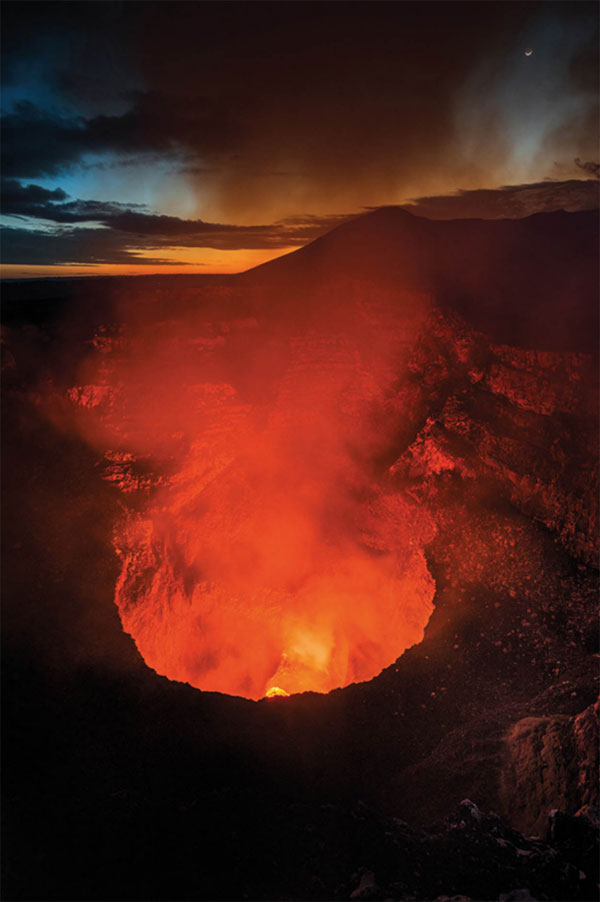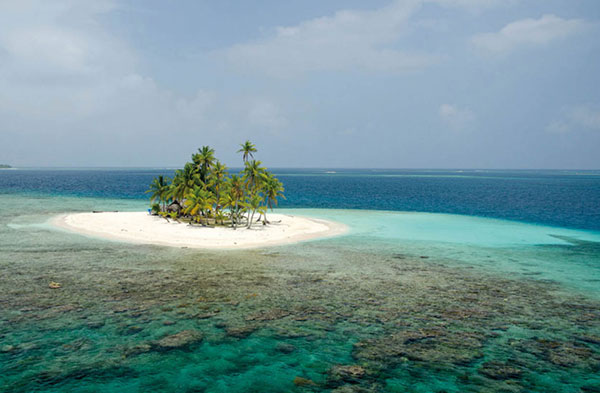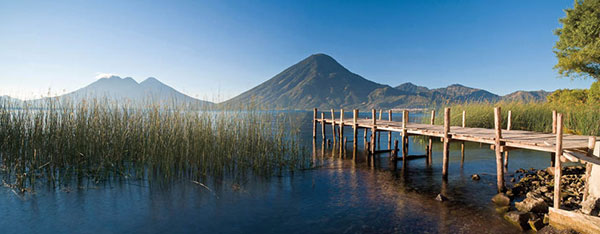A REGION OF FIRE AND FOREST
From lush rainforests to coffee plantations, smoking volcanoes and tropical beaches, Central America is a place you won’t forget in a hurry.
When American explorer John Lloyd Stephens was traveling through Central America in 1840, he couldn’t believe his eyes when he stumbled upon Copán in Honduras. He thought that it couldn’t have been built by the Maya, but perhaps some long-forgotten civilization – and he was able to buy the ruins outright for US$50. It was that easy back then.
For decades, Central America was seen as a series of unstable, backwater banana republics that had never quite recovered from colonial rule. Only the most adventurous travelers made their way here. Today, those days are long gone. While security concerns occasionally bubble up around the region, the era of civil wars and uprisings has mostly faded away. Few tourists are scared away these days, and they’re hiking their way to the top of active volcanoes and doing yoga in eco-lodges in the middle of the thickest jungle. In parts of Belize, Costa Rica, and Panama, expats seem to outnumber those born there.
The region’s rich cultural legacy permeates the landscape. The ancestors of the Maya still carry on their traditions in the northern half of the region, while their once-grand stone cities – many of which are still being carved out of the jungle – have only begun to reveal themselves. The Spanish left colonial plazas and churches, while the African diaspora left a lasting impression on music, dance, and cuisine along the Caribbean coast. There are modern, maze-like metropolises with millions of inhabitants who order the wine pairing with their tasting menu and shop at the same designer stores frequented in North American cities, as well as isolated Indigenous groups like the Lenca or Guna Yala, who maintain their ways despite the rapidly developing world around them.
All-inclusive beach resorts and package bus tours may lure many travelers to the region, but a 10-minute bicycle ride out of town often leads to a world where ancestral farming practices and howler monkeys still reign supreme. As compact as it may be, there are still vast pieces of terrain that remain unexplored, such as Panama’s roadless Darien and the rich forests of La Mosquitia. While buying ancient cities is no longer realistic, the feeling of stepping out into the great unknown is still there.

Nicaragua’s Masaya volcano.
LAND AND ENVIRONMENT
With more than 100 volcanoes, two coastlines, and forests with some of the highest biodiversity on earth, Central America is a natural marvel.
Less than 50km (31 miles) between the Pacific and the Caribbean Sea at its narrowest point, the thin strip of land that connects North and South America is home to an astounding 7 percent of the world’s biodiversity. Central America is one of the rare places on earth where in a single day you can walk on a beach beside one ocean, climb an active volcano, hike through cloud forest, and watch the stars come out over an entirely other ocean before going to sleep. Despite the region’s compact size, there is a lot going on.
Once covered in water, Central America began to rise out of the ocean some 15 million years ago when, beneath the Earth’s crust, the Cocos Plate began to slide under the Caribbean Plate. Underwater volcanoes developed from the pressure, grew large enough to form islands, and over millions of years sediment filled in the gaps until an isthmus was formed, connecting the two continents. This happened around 4.5 million years ago and the world has never been the same. Animals migrated north and south over the land bridge, leading to the immense biodiversity that we find there today.
Earthquakes and hurricanes
Natural disasters are nothing new to Central America. Hurricanes and other tropical storms regularly slam into the coastline of Central America (especially the Caribbean coast) and can bring great destruction with them. The 2020 hurricane season was the most active on record with eight major named storms battering Central America. Looking further back, one of the earliest recorded hurricanes was the Great Hurricane of 1780, which struck the eastern Caribbean, killing approximately 20,000 people.

A Kuna Yala islet, Panama.
Devastating tropical storms build in the Gulf of Mexico before winging their way through the Central American isthmus. Possibly because of climate change, these storms seem to have been increasing in frequency and severity in recent years. Positioned to the west of the hurricanes’ usual path, Belize has managed to avoid a good many of the Caribbean storms of the past 40 years, but those that have scored a direct hit have been disastrous, like 1961’s Hurricane Hattie, which leveled Belize City, prompting the building of the modern, planned capital of Belmopan and the relocation of all government offices. While Honduras and Nicaragua bore the brunt of the havoc wreaked by Hurricane Mitch in 1998, Guatemala suffered from heavy rains brought by the storm, which caused landslides and flooding, resulting in 260 deaths and the homelessness of tens of thousands. The Yucatán is also periodically blasted by extreme winds – the damage inflicted by 320kph (200mph) Hurricane Dean in 2007 destroyed the resort of Mahahual, though it has since been rebuilt. Few tropical storms find their way to the southern portion of the region, though they are not unheard of. In 2016, Hurricane Otto followed the Nicaragua and Costa Rica border and caused significant damage in Panama, where landslides and unusually strong winds surprised a population unused to them. In 2020, Hurricane Eta tore into Nicaragua as a category four storm that left thousands displaced after widespread destruction.

Serenity and solitude at Lake Atitlan in the Western Highlands of Guatemala.
Beneath the earth’s crust, minute movements of continental tectonic plates cause seismic convulsions and volcanic eruptions in a region plagued by the most powerful natural forces that planet Earth can muster. Historically, Guatemala and El Salvador have been on the receiving end of much of the region’s seismic activity, located as they are between the Pacific and Caribbean coasts, and with a chain of volcanoes spanning the countries. The Mesoamerican Pacific coast of the two countries belongs to the continent’s active tectonic field, where the small Cocos Plate is pushed and shoved by the forces of the larger Caribbean Plate to the east. Guatemala City was virtually flattened by quakes in 1917 and 1918, and again most recently in 1976, when at least 25,000 people were killed and a million left homeless. With its epicenter in Chimaltenango and measuring 7.5 on the Richter Scale, the tremendous reach of this disaster exposed and exacerbated governmental corruption alongside the progressive suffering of the poor. San Salvador has been hit by earthquakes again and again, several of them measuring greater than 7 on the Richter Scale. In 2001, a 7.7 quake left more than 900 dead and 200,000 homeless.
Between the peaks of the spine-like ranges that traverse Central America are cool highland valleys with gently rolling, wooded pastureland that reminds visitors more of Switzerland than of a tropical country.